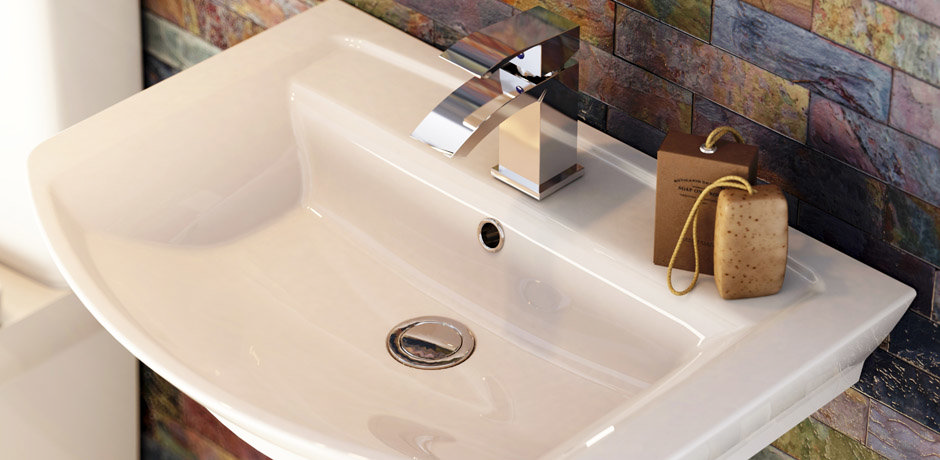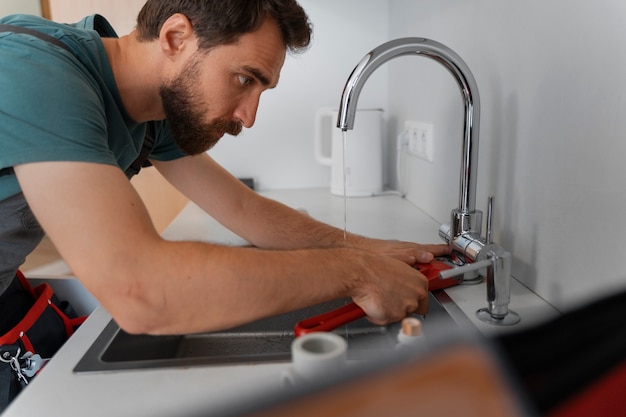On this page down the page you can locate some incredibly good data around How to Fix a Slow Draining Sink.

Intro
We have actually all been there: You're cleaning your teeth or washing your hands, and you observe the water merging in the sink. Instead of rapidly swirling down the drain, it remains, transforming your once-refreshing morning routine right into a small overload scene. A slow-draining sink isn't simply bothersome; it's often a sign of larger plumbing problems lurking below the surface. The good news is that many slow-draining sinks can be repaired with a little expertise, a few basic tools, and some patience. All set to tackle this job head-on? Allow's roll up our sleeves and dive right in.
Recognizing the Root Causes Of a Slow-Draining Sink
Prior to you start poking around in your pipelines, it helps to recognize what could be causing the slowdown. Recognizing the source makes it much easier to select the ideal fix.
Usual Wrongdoers Behind Slow Drain
So, what's blocking things up? Generally, it's a combination of everyday particles-- believe hair, soap scum, toothpaste deposit, and leftover food bits. Gradually, these little bits accumulate and hold on to the pipe wall surfaces, slowly tightening the flow and making it harder for water to pass through. Sometimes, natural resource from difficult water can also include in the gunk, producing the excellent storm for stubborn obstructions.
When is it Time to Do Something About It?
If you observe the water draining slower than normal, it's an excellent idea to step in earlier rather than later. Waiting also long could lead to complete blockages, undesirable smells, or even pipe damages. If the water takes greater than a couple of secs to clean out after switching off the faucet, consider it a red flag and prepare yourself to put on your DIY hat.
Tools and Materials You'll Require
The right tools make all the distinction. Thankfully, you won't need a fully stocked plumber's van to get the job done.
Crucial Tools for DIY Repairs
A plunger is your best starting factor. A tiny, sink-sized bettor produces suction that can dislodge small blockages. For more relentless blockages, a drainpipe snake (occasionally called a plumbing professional's auger) works marvels. A set of gloves, a flashlight, and perhaps a set of safety goggles are additionally handy.
Suggested Cleansing Solutions
Moderate recipe soap and hot water can help break down greasy build-up. A mix of baking soft drink and vinegar is a tried and true natural remedy, and enzymatic cleansers supply an even more eco-friendly method. Maintain chemical drainpipe cleaners as a last option, as they can be extreme on your pipes.
Safety First: Precautions and Prep work
Before you launch into unclogging setting, think of security. You're taking care of possibly unclean water and debris, so slip on a pair of handwear covers. If you're making use of chemical cleansers, guarantee the room is well-ventilated and follow the directions on the label.
Protective Gear and Work Space Configuration
Set some old towels or dustcloths around the sink location to capture sprinkles. Remove any kind of things that could get in your method, like soap dispensers or tooth brush holders. Make certain you have good lighting-- grab a flashlight if needed.
Step-by-Step Guide to Fixing a Slow-Draining Sink
Currently, allow's get into the nitty-gritty. This detailed process will assist you through straightforward methods to recover your sink's drain.
Step 1: Get Rid Of and Tidy the Stopper
Frequently, the stopper (that tiny plug you lower to block water) is the initial perpetrator. Remove it meticulously and clean off any kind of hair or gunk trapped around its base. Wash it completely before putting it back in position.
Step 2: Utilize a Plunger to Displace Debris
Got that plunger ready? Placement it over the drainpipe and provide it a couple of firm pumps. The idea is to produce suction that can loosen up any kind of obstruction. If you see little bits of debris drifting up, you get on the right track.
Action 3: Try a Drain Serpent or Wire Hanger
If the bettor doesn't do the trick, it's time to highlight the drainpipe serpent. Delicately feed it right into the drainpipe and spin as you go. You may really feel some resistance-- that's most likely the blockage. Maintain turning and pulling till you remove the blockage. If you do not have a drain snake, a straightened cable wall mount can operate in a pinch.
Tip 4: Use a DIY Drainpipe Cleaner
An all-natural cleaner made from baking soda and vinegar can break down recurring gunk. Pour half a mug of baking soda into the drain, adhered to by half a mug of vinegar. Let it fizz for around 15 minutes, then flush with hot water. This chemical reaction frequently does wonders for small obstructions.
Tip 5: Reconstruct and Test the Sink
Placed whatever back with each other and run the tap. Does the water now swirl away at a respectable speed? If yes, give on your own a pat on the back. Otherwise, do not anguish-- there are still a few even more tricks up your sleeve.
Alternative Approaches for Stubborn Clogs
Not all blockages are developed equivalent. If your sink still rejects to cooperate, think about these alternative services.
Sodium Bicarbonate and Vinegar Technique
We already discussed this, however it's worth noting again. This mild, eco-friendly technique is safer than chemical cleansers and often quite reliable.
Enzymatic Drain Cleansers
Enzyme-based cleaners make use of natural germs to absorb raw material. They're an outstanding option if you're aiming to stay clear of extreme chemicals. Simply keep in mind, they might take a bit longer to work their magic.
Chemical Drain Cleaners: Benefits And Drawbacks
Chemical cleansers can blow up through challenging obstructions quickly, but they're not without disadvantages. They can create warmth and fumes, damages pipes if made use of excessively, and posture ecological risks. Use them sparingly, and always follow the instructions meticulously.
Preventive Measures to Keep Your Sink Flowing
Avoidance is the best remedy. By taking on a couple of easy habits, you can keep your sink from reducing in the first place.
Normal Cleaning Up Behaviors
Wipe down the sink container and component location regularly. Get rid of hair or food particles prior to they have a chance to wash down the drain.
Staying Clear Of Damaging Substances Down the Drain
Reconsider before dumping coffee grounds, oil, or coarse veggie scraps down the sink. These culprits cling to pipeline wall surfaces, developing clogs in time.
Regular Maintenance Checks
Set up a quick monthly evaluation. Run warm water via the sink for a few mins, paying attention to the flow. If it appears slow, act fast before it comes to be a full-blown clog.
When to Call a Specialist Plumber
In some cases, no matter how tough you try, that clog simply will not budge. That's when it's time to bring in the pros.
Signs That Show an Extra Serious Issue
If your sink drains gradually regardless of numerous efforts, or if you see water supporting in other fixtures (like your shower or toilet), you may have an extra serious pipes problem lurking much deeper in the system.
Balancing DIY Initiatives with Expert Help
While do it yourself can conserve you money and offer a feeling of success, there's no shame in calling a professional. An expert plumbing professional can analyze your whole plumbing setup, guaranteeing there's no underlying damages or lasting problem that could cost you much more later on.
Contrasting Costs and Long-Term Solutions
Before deciding, take into consideration the big picture. An affordable, quick fix could resolve the issue briefly, but purchasing a more long-term service could save you money and tension over time.
Evaluating the Costs of DIY vs. Professional Repairs
DIY repairs typically cost little bit more than the price of a bettor or a container of baking soft drink. Expert services, on the other hand, featured a cost but may stop repeated problems and expensive fixings later.
Investing in Quality Fixtures and Upgrades
If your sink's layout adds to constant blockages, it might be worth upgrading to higher-quality fixtures or changing the pipes layout. Consider this an investment in your home's performance and convenience.
Conclusion
A slow-draining sink can feel like a minor irritability, however it's frequently an indicator that your pipes needs a little tender loving care. By recognizing the source, employing the right tools and techniques, and devoting to basic safety nets, you can maintain your sink moving openly. And when all else stops working, never ever hesitate to employ a specialist-- your home's pipes deserves the financial investment in care and maintenance.
Three Common Ways to Fix a Slow Drain
Baking Soda Method
Boil a full pot of water. Measure out cup of baking soda and pour it down the drain. Then take cup of the magical cleansing substance known as white vinegar and drop that down there too. Allow the mixture to fizz in the drain for five minutes as the vinegar and baking soda combine. Now dump in that whole pot of boiling water. This combination of cleaning substances should clear out anything that is causing your sink to drain slowly. If it doesn t...
Zip-It
If the baking soda method doesn t clear out your drain, it may be because a significant amount of hair and/or other debris has collected there and you need to remove it. Purchase a Zip-It tool at any home improvement or hardware store and insert it into your drain. It will catch any collected hair or debris that s blocking the flow of water. Pull it out. If it s got a big clump of hair, etc. on the end, you ve probably got your culprit.
Drain Cleaner
If these methods don t work, there is the standard drain cleaner that you can also buy in a hardware store or even your local grocery store. It s better if you can use a household solution, but these drain cleaners often work in a pinch. They re very simple to use. You generally just dump them in your drain and wait. If even this method is not effective, it may be time to call the plumber.
https://www.mrrooter.com/oneida/about-us/blog/2017/july/three-common-ways-to-fix-a-slow-drain/

We had been brought to that article about through an associate on another blog. Loved our blog posting? Please share it. Let somebody else discover it. We love your readership.
Call Today
Comments on “How To Correct A Slow-Draining Sink”